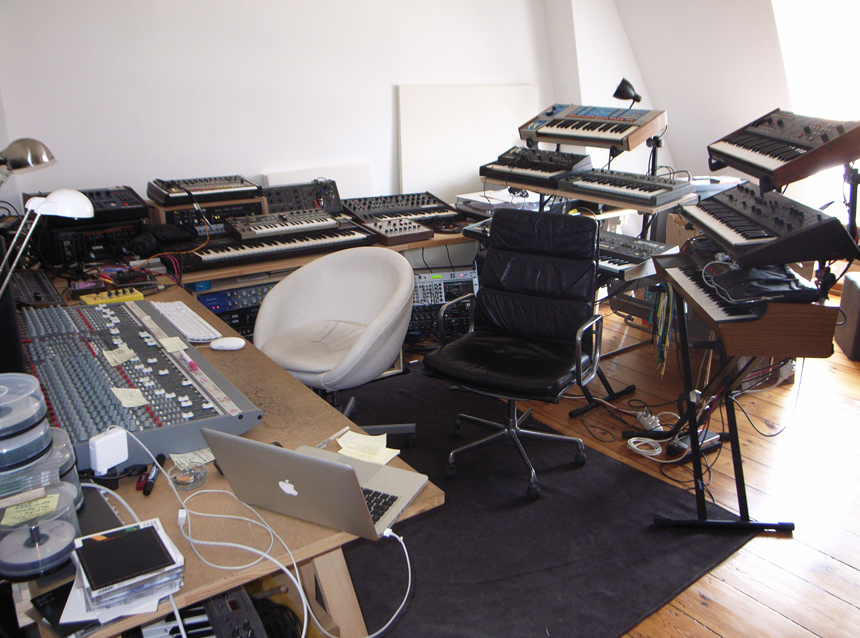Me in my studio: Headman
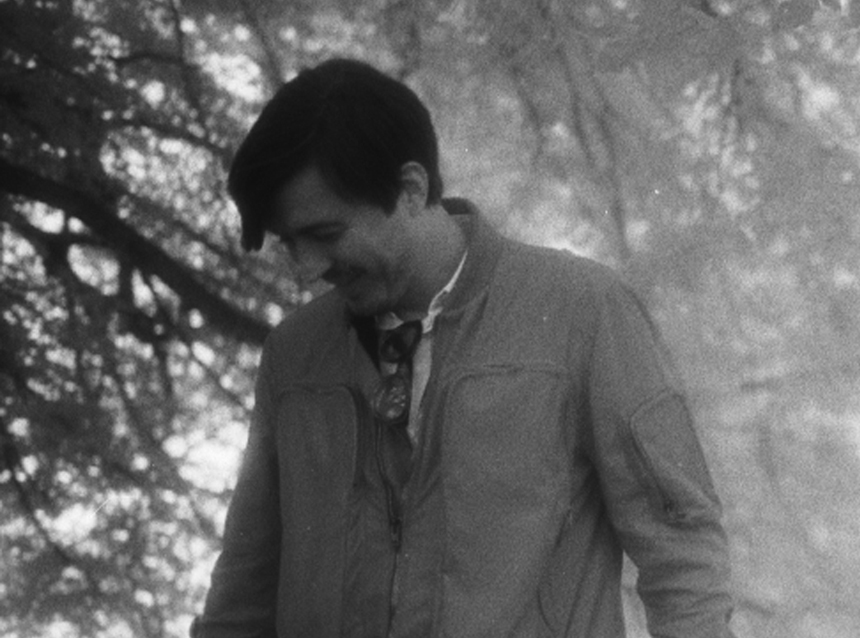
Intro
Robi Insinna, aka Headman has been creating his rich sound of Leftfield funk and nu-disco with force. He runs the successful Relish records and has remixed everyone from Franz Ferdinand to Roxy Music, so we thought it was high time we nosed around his studio!
After the jump Headman takes us around his studio and tells us a bit about the kit he uses to create his unique brand of funky electronic disco.
To get all the latest on Headman's releases and remixes, make sure you head over to www.headman.org
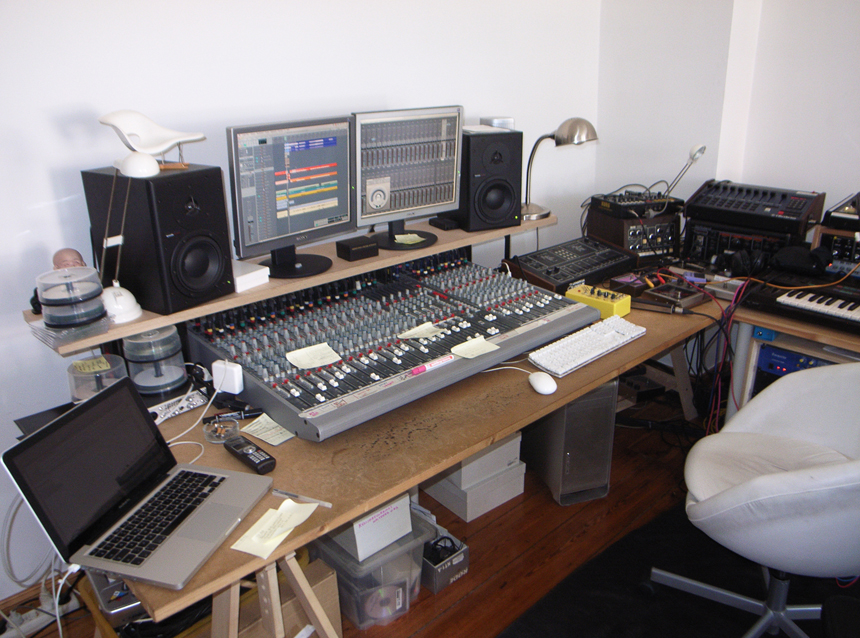
Logic
"The centre of the studio is a G5 with Logic 7, I'm just about to upgrade to Logic 9. I record most of my effects and compression via outboard, CPUpower is not a problem yet. In the box processing is reduced to some EQ and automation.
"The desk is an Allen & Heath GS3 which is only used for routing purposes during recording. This way I never have to worry about latency and can hear every synth immediately without having to patch them."
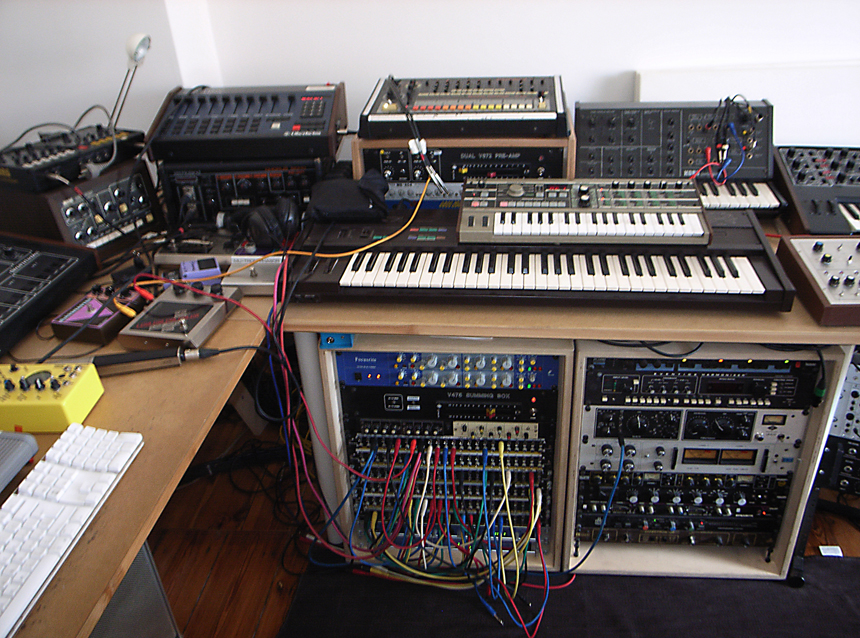
Drum machines
"Here you can see my drum machines, Sequential Circuits Drumtraks, DMX, Roland TR- 808 and Korg Minipops. Most of the drum machines are MIDI-fied.
"Sometimes I use their internal sequencer synced to logic, and sometimes I use them just as a sound expander. The DX7 i use as a MIDI-keyboard and for the Sounds. The Microkorg i use mainly for the arpeggiator, sometimes as a MIDI-keyboard. Below are the two racks with my outboard stuff."
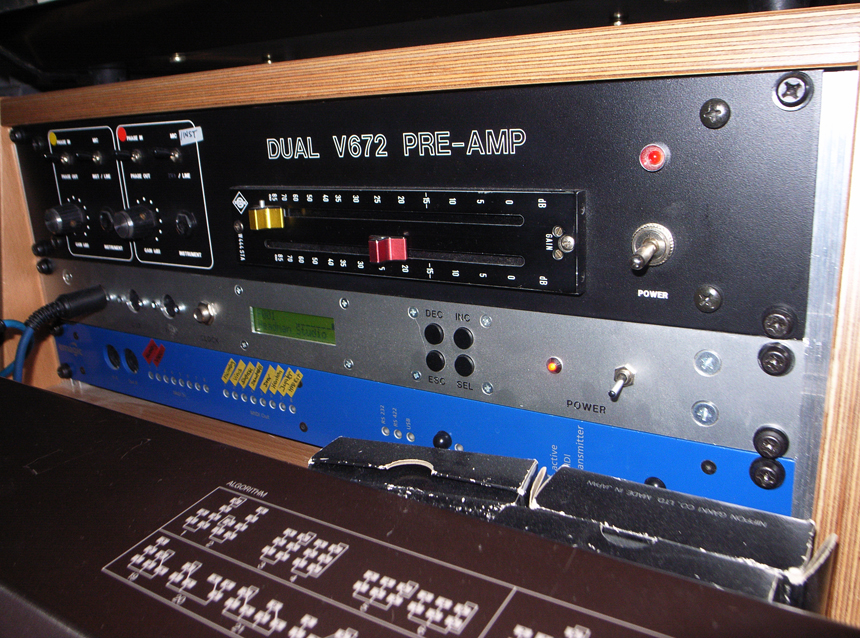
Pre amp
"This is a two-channel preamplifier made of two Telefunken V672 cards with a Neumann stereo fader. Sounds pretty clean up to a certain point, from there on you get a real nasty distortion. But sometimes this is just the ticket. Below you find a self-built MIDI to CV converter which drives all my mono-synths.
"Unfortunately there no multi-channel CV-interface commercially available today, so you have to come up with something self-built. All the DIY-stuff is built by my studio-tech, Lars who runs his own studio and is part of the motorik-dub-outfit 'Tolcha'."
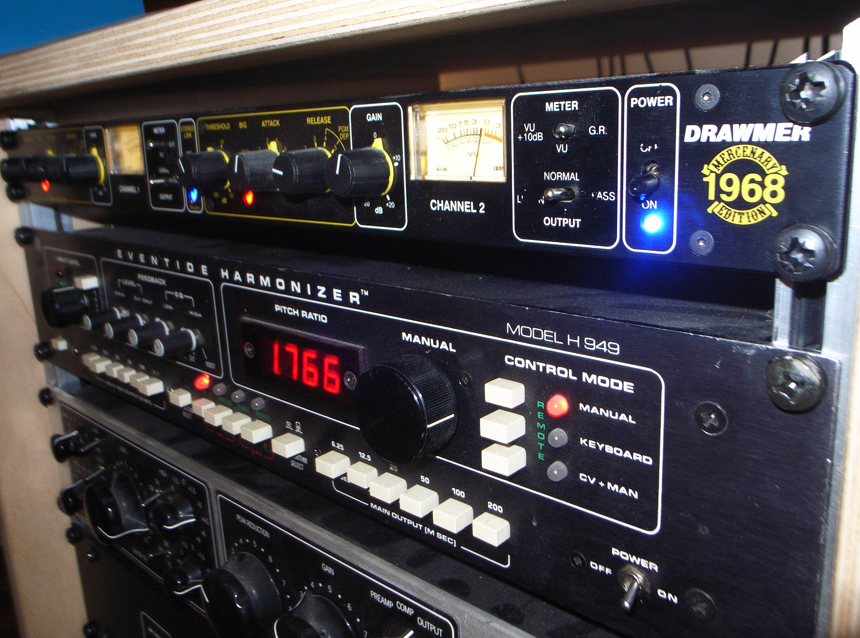
Drawmer compression
"The Drawmer 1968 is my stereo buss compressor. I used it on literally every mix since I got it four years ago. It makes everything come together in a really nice way. The meters show a gain reduction of around 2 dB most of the time, so nothing too drastic, but this makes the drums sit in the mix much better.
"Below is a Eventide H949 Harmonizer. I initially bought it to get that special pitched-down snare sound Bowie /Visconti or Conny Plank used in the 70ies. But that unit can do much more than that, really nice to fatten up synth sounds: different delay times on each channel, and one channel slightly pitched up/down."

Universal Audio LA-610
"My go-to pre amp, the Universal Audio LA-610, which in comparison to most transistor preamps distorts in a pleasant way when you drive it hard.
"Below you'll find my summing box which consists of a Neumann V475 amplifier card and a stereo fader. Both the summing card and the fader are active designs and have there own in/out transformers, so I got plenty of them in the signal path. I believe in summing!"

Guitar Pedals
"The guitar pedals are used on almost every synth-recording I do. Worth mentioning is the Mu-tron Phasor which makes everything sound more alive without sounding like an added effect.
"The Space-Echo is my favorite delay. Nothing sounds quite like real tape, real flutter and a real reverb tank. The tape itself gets wrapped up the head pretty fast though. Over the time I became a real expert of cutting endless tape loops."
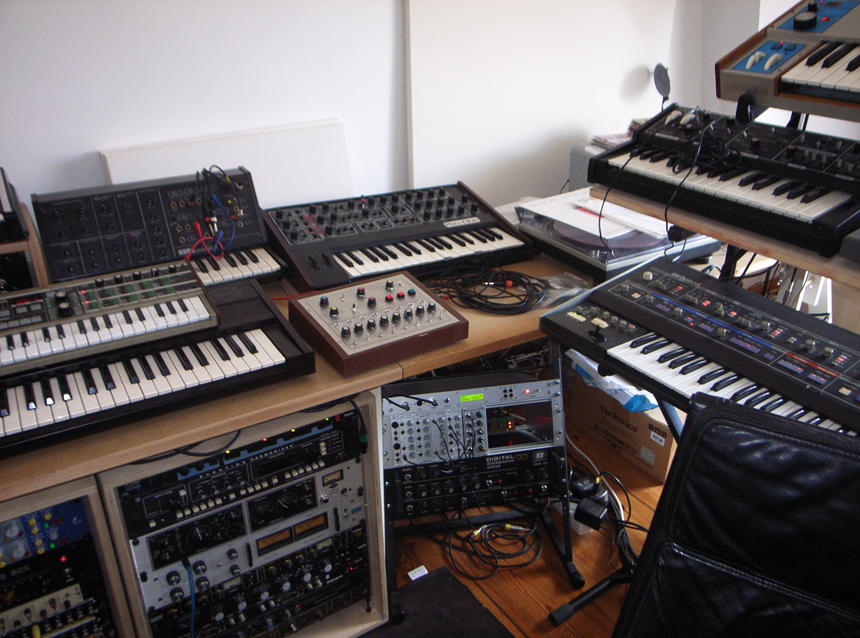
Synths
"The MS10 you see above gets mostly used for short percussive sounds such as noise added under snare drums, or in conjunction with the sequencer.
"The Pro-One is pretty good at making harder synth hooks or just sound effects. The Dynacord DRS-78 is a very economic piece of Studio gear at the same time one of the most dark and claustrophobic sounding reverb i ever heard. it makes you feel like being in a concrete shelter. For some things it's just perfect."
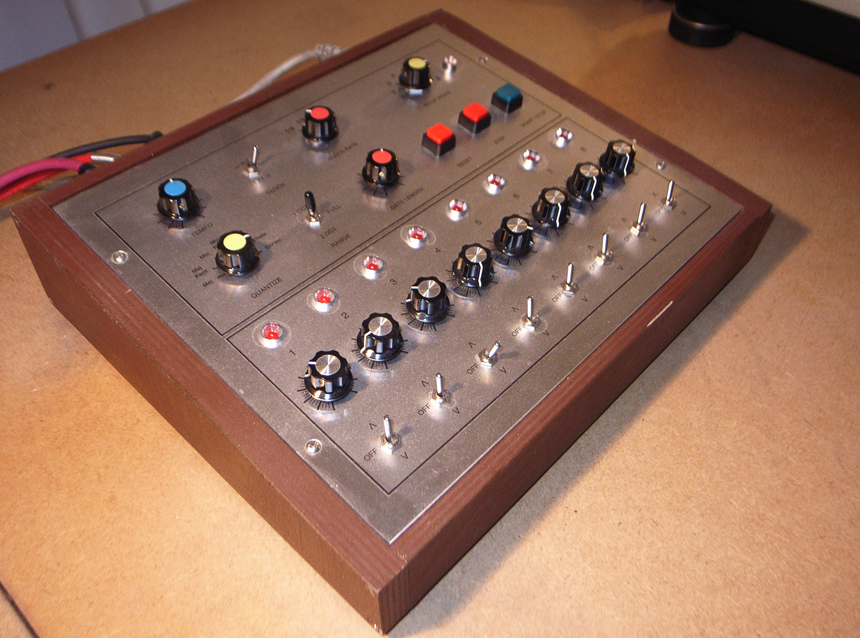
DIY
"This is a small DIY 8 step analog sequencer. Good to use if you want to make some sequencer lines without staring at a computer screen.
"I usually record the whole song with it and make variations by turning the knobs and switches instead of moving rectangulars in logic. It is synced to the computer via Midi. I think workflow is important, so it's really convenient to have everything set up and not lose ideas while you wonder how to sync something."
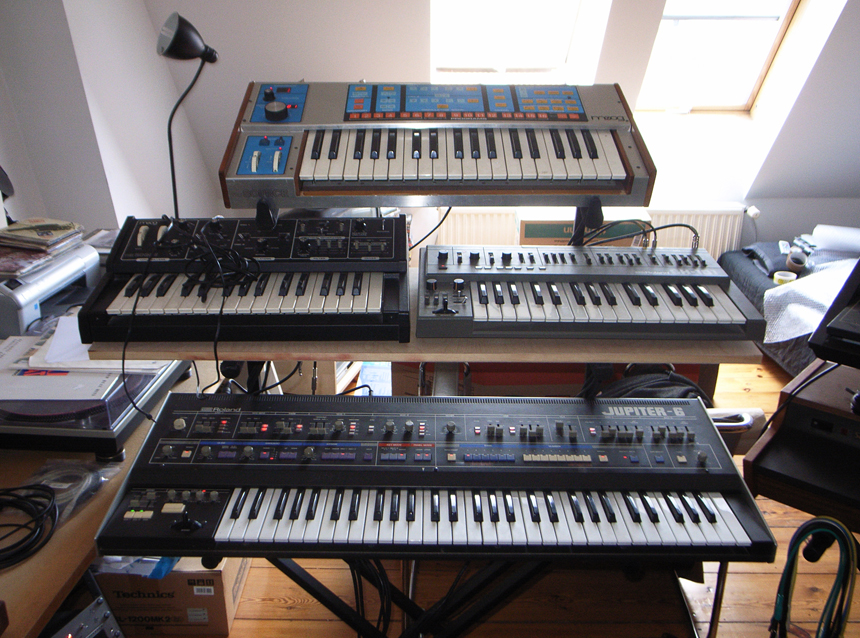
More hardware synths
The Moog Source is great for bass, but sounds a bit 'loose' sometimes. The Rogue is like the tamed little brother. If I need a more tight and unobtrusive bass sound, I usually reach for the Roland SH-101.
The Jupiter is a beast and very versatile soundwise. Tuning is pretty stable, it has built-in Midi, an arpeggiator and you can save your sounds. And it's polyphonic. Perfect Synth....
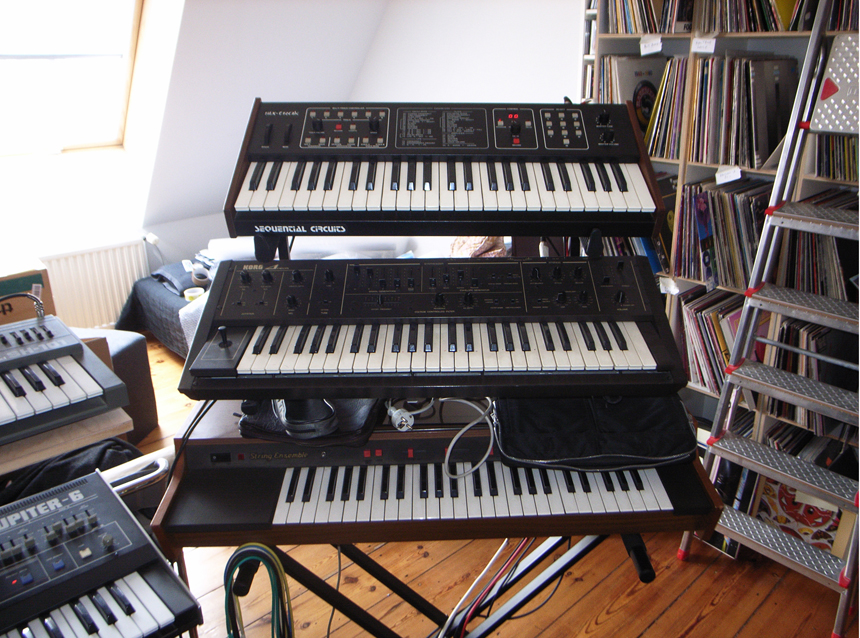
Synth rack
"The Sequential Circuits Sixtrak gets mostly used for small add-on sounds, little sweeps here and there. The Korg Delta is a strange hybrid between a synth and a string machine.
"It was used as the hook synth on my latest single "Be Loved" by the way. The Solina String Synth i'm most proud of. If you know the history of it and know who used it, you'll understand why."
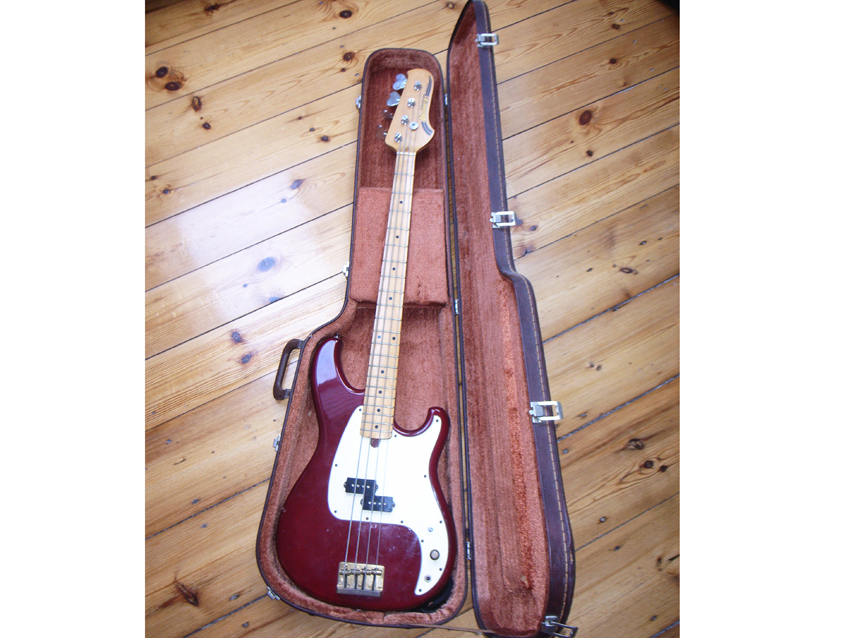
Bass guitar
And last; my Bass. Nothing special but i'm very affectionate towards it, it's the piece i had since i started working in this Studio. All the earyl Headman Production Basslines came from that Bass.
